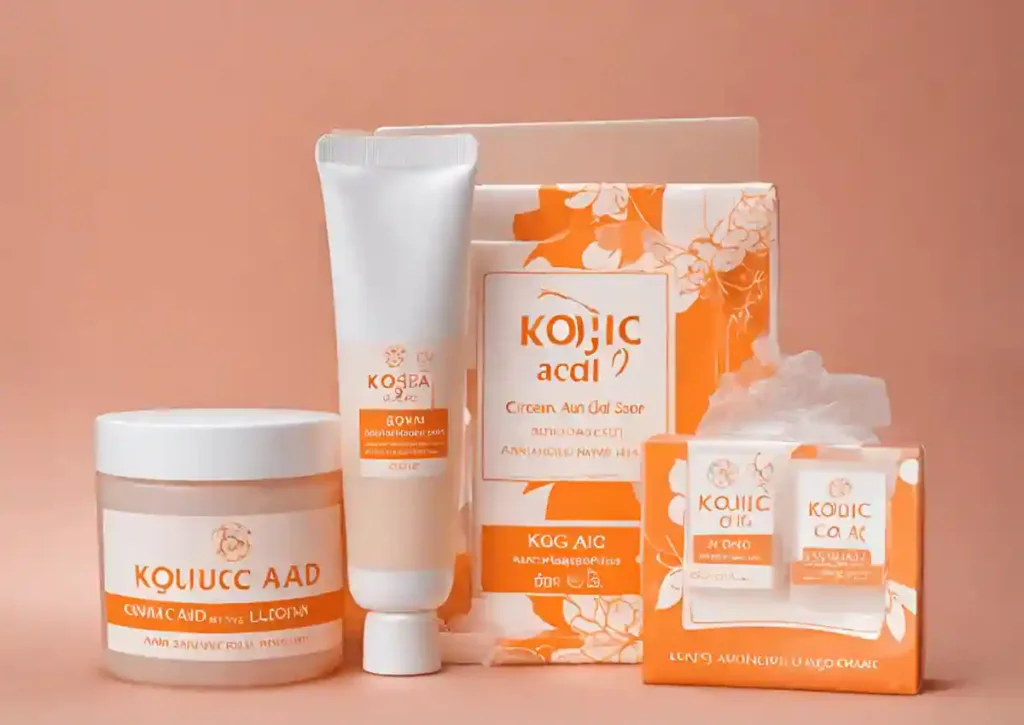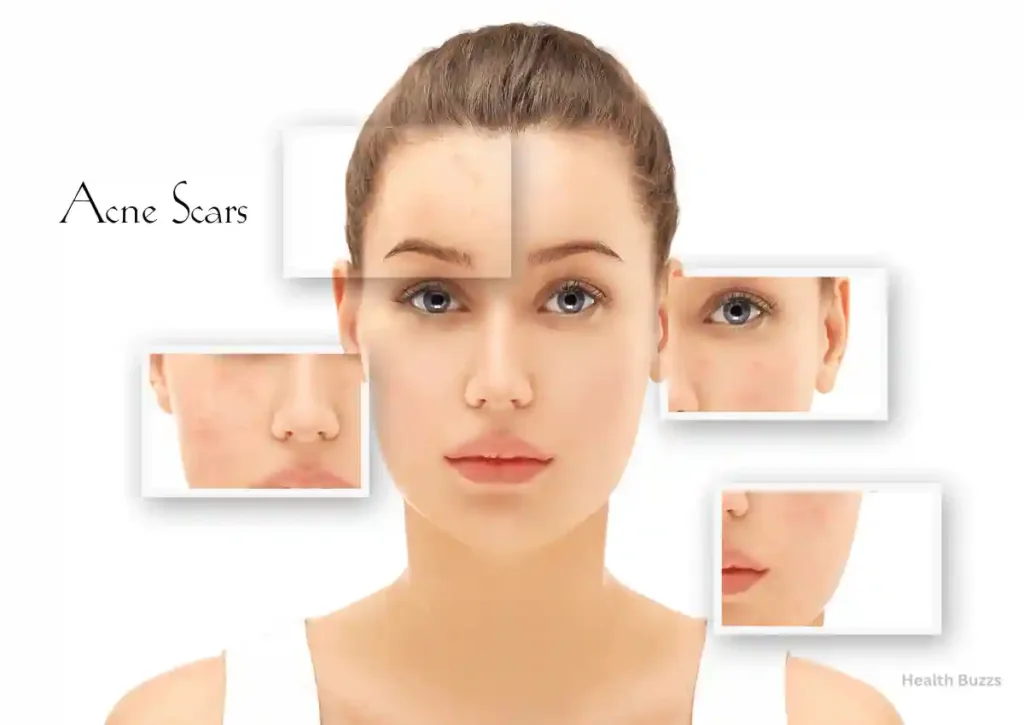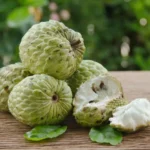Introduction-
A natural substance with several advantages, kojic acid has attracted much interest lately. Kojic acid is a naturally occurring ingredient widely used in the cosmetics industry due to its potential benefits for the skin. It is a white powder derived from various fungi, particularly from the species of mushrooms called Aspergillus oryzae and Aspergillus nigricans. When applied to the skin, kojic acid reduces the appearance of discoloration and dark spots and improves overall skin tone.
What is it, and How Does it Work?
Many individuals turn to various skincare ingredients for brighter and more even-toned skin. Recently, kojic acid has garnered substantial popularity as a prominent ingredient. Kojic acid Known for its skin-lightening and brightening properties, kojic acid has become a go-to solution for those seeking to address hyperpigmentation.
But what exactly is kojic acid, and how does it work its magic on the skin? In this section, we will delve into the world of kojic acid, exploring its origins, mechanism of action, and effectiveness as a hyperpigmentation treatment.
Whether you’re dealing with dark spots, melasma, or uneven skin tone, understanding how kojic acid can help you achieve a clearer complexion is essential. So, let’s dive in and discover the power of this remarkable ingredient.
What is kojic acid?
Kojic acid is a naturally occurring ingredient used in various skincare products for its skin-lightening and anti-aging properties. Multiple fungi derive it, particularly the Aspergillus oryzae species, commonly used to produce fermented foods such as sake, soy sauce, and miso.

How Does Kojic Acid Work?
Kojic acid is known for inhibiting melanin production, the pigment responsible for colorizing skin. It accomplishes this by decreasing the action of tyrosinase, an enzyme that produces melanin. By inhibiting melanin production, Kojic acid may improve skin tone by whitening the skin and minimizing the appearance of dark patches.
In addition to its skin-lightening properties, Kojic acid has also shown the ability to diminish the appearance of acne scars. By inhibiting melanin production, kojic acid can help fade the dark marks and discoloration often accompanying acne breakouts. Regular use of kojic acid can help minimize the visibility of acne scars while enhancing the skin’s overall texture.
Benefits of Kojic Acid
In addition to its benefits for skin lightening and treating acne scars, kojic acid also has several other benefits for the skin. Here are some key advantages of using kojic acid:
1- Skin Brightening:
Because of its capacity to prevent melanin formation, kojic acid can lighten the overall complexion. By reducing hyperpigmentation and dark spots, kojic acid can help enhance skin clarity and give you a more even skin tone.
2– Hyperpigmentation:
When the skin overproduces melanin in some places, it causes hyperpigmentation, which appears as dark patches or spots. Kojic acid can reduce hyperpigmentation by inhibiting melanin production, leading to lighter and brighter skin in these areas.
3– Dark Spots:
Dark spots, also known as age spots or liver spots, can occur due to sun exposure, acne, or other factors. Kojic acid can effectively reduce the appearance of dark spots due to its melanin-inhibiting properties. Regular use of kojic acid products can help to lighten dark spots, resulting in an even skin tone.
4– Lightening Skin:
One of the most essential advantages of kojic acid is its capacity to lighten skin tone. It operates by inhibiting the tyrosinase enzyme, which is responsible for melanin production, the pigment responsible for skin darkening. By reducing melanin production, kojic acid helps to lighten dark spots, hyperpigmentation, and other imperfections on the skin.
5– Anti-Aging Properties:
Researchers have also revealed that kojic acid contains anti-aging properties. It helps slow the aging process by inhibiting the activity of collagenase, an enzyme that breaks down collagen, the primary structural protein in the skin. By inhibiting collagenase, kojic acid helps to maintain the skin’s elasticity and firmness, reducing the appearance of fine lines and wrinkles.

6- Anti-Inflammatory Effects:
Kojic acid has demonstrated anti-inflammatory properties that can help soothe and calm irritated skin. It works as an anti-inflammatory by preventing the inflammatory process’s generation of pro-inflammatory cytokines. It can assist in decreasing redness, swelling, and irritation brought on by several skin disorders, including eczema and acne.
7- Skincare Products:
Kojic acid is a skin-lightening ingredient in various skincare products, including lotions, creams, and serums. Its skin-lightening effects are long-lasting and can enhance the skin’s natural tone and complexion. Additionally, kojic acid is often combined with other active ingredients to improve its benefits and tackle specific skin concerns.

. Benefits of Kojic Acid for Skin Lightening
How Kojic Acid Inhibits Melanin Production: Kojic acid acts by inhibiting the activity of tyrosinase, the enzyme responsible for melanin production. By inhibiting tyrosinase, kojic acid prevents the formation of new melanin, which results in a decrease in the skin’s pigmentation.
– Other Skin Lightening Benefits of Kojic Acid
Kojic acid contains antioxidant abilities that protect skin from harm due to free radicals while encouraging a youthful glow. Furthermore, kojic acid has skin-lightening effects. It can help reduce the unpleasant appearance of freckles and other forms of sun damage.
. Benefits of Kojic Acid for Acne Scars
– Kojic Acid’s Anti-Inflammatory Properties
Besides its skin-lightening effects, kojic acid also has anti-inflammatory properties. Inflammation is one of the primary contributors to the formation of acne scars, as it causes redness, swelling, and irritation. Applying kojic acid to the affected area can help reduce inflammation and speed healing.

– Kojic Acid’s Ability to Fade Acne Scars
Over time, regular application of kojic acid can fade the appearance of acne scars. By inhibiting melanin production and promoting skin regeneration, kojic acid can help lighten and reduce the visibility of acne scars, leaving you with smoother and more even-toned skin.
. Benefits of Kojic Acid for Sun Damage
– Kojic Acid’s Ability to Protect Against UV Damage
Kojic acid effectively reduces the appearance of existing sun damage and protects from future damage. By forming a layer on the skin, kojic acid can help to shield the skin from the harmful effects of UV radiation. It reduces the likelihood of sun spots and hyperpigmentation, preventing premature aging and reducing the risk of skin cancer.

– How Kojic Acid Improves Sun-Damaged Skin
In addition to its protective properties, kojic acid can improve the appearance of sun-damaged skin. By reducing pigmentation and stimulating collagen production, kojic acid can help to rejuvenate sun-damaged skin, reducing the appearance of fine lines and wrinkles. Additionally, kojic acid can help repair tired and dehydrated skin, leaving a sense of renewal and radiance.
Kojic acid is a potent and beneficial ingredient for various skin concerns. Its capacity to prevent melanin synthesis, decrease inflammation, and promote skin regeneration makes it a valuable skincare ingredient for lightening, brightening, and rejuvenating the skin. If you have dark patches, acne scars, or sun damage, kojic acid may be an effective solution to help you achieve the glowing, even-toned complexion you desire.
The Step-by-Step Guide on How to Use Kojic Acid
If you’re looking to achieve maximum effectiveness with Kojic Acid, it’s essential to understand the step-by-step process of its application. Whether you’re using Kojic Acid soap or cream, knowing how to utilize this ingredient properly on your face and body can make all the difference in achieving the desired results.
1. Cleaning your face
- First, cleaning your face and body thoroughly before applying any Kojic Acid product is crucial. It will keep your skin clean and ready for absorption. Gently pat dry with a towel.
2. Apply Kojic Acid
- Next, apply a small amount of Koji Acid soap or cream to the desired areas. If you’re using a soap, put it onto your hands or a washcloth before gently massaging your skin. Take a pea-sized amount of cream evenly over the target area.
3. Allow Absorption
- After application, let the product rest on your skin for a few minutes. The length of time might change based on the manufacturer’s specific instructions. It’s important not to leave Kojic Acid on for an extended period as it may irritate.
4. Massage Gently
- Massage the kojic acid product into your skin using gentle, circular motions. Avoid scrubbing too hard, especially if you have sensitive skin.
5. Rinse off
- After the recommended time has passed, rinse off thoroughly with lukewarm water. Ensure your skin is free of any residue which can lead to excessive drying or potential adverse effects.
6. Consistently
- Using Kojic Acid products consistently as part of your skincare routine is advisable for optimal results. However, be mindful not to overuse them, as excessive application may cause sensitivity or irritation.
7. Follow with Moisturizer-
- Lastly, always follow up with an appropriate moisturizer or sunscreen after using Kojic Acid products. It will help keep your skin hydrated and protected from harmful UV rays.
8. Sunscreen is a Must
- Kojic acid makes your skin more sensitive to sunlight. Use a broad-spectrum sunscreen with a minimum SPF30 every time, mainly if you use kojic acid during the day. It helps prevent sun damage and maintains the effectiveness of the treatment.
9. Frequency of Use
- Follow the recommended frequency of use mentioned on the product. Using kojic acid too frequently may lead to irritation.
10. Be Patient
- Results with kojic acid may take time. Be patient and consistent with your usage. It’s advisable to consult a dermatologist if you have concerns or experience any adverse.
By following these step-by-step guidelines for adequately using Kojic Acid, you can maximize its effectiveness in achieving a brighter and more even complexion on your face and body. Consider a dermatologist if you have any concerns or specific skin conditions before incorporating any new skincare ingredient into your routine.
Tips and Precautions for Using Kojic Acid on the Face
When adding kojic acid to your skincare regimen, it is critical to prioritize safety and efficacy. The vital component kojic acid is well-known for having skin-lightening properties. On the other hand, misuse might have adverse effects. Following a few tips and precautions, you can use kojic acid safely and achieve the desired results.
– Patch Test–
First and foremost, performing a patch test before applying kojic acid on your face or body is crucial. Apply a small amount of the product on a small skin area, preferably on the inner wrist or behind the ear. It will help you determine if your skin r acts negatively to kojic acid or if you have any allergies or sensitivities.
– Start Slowly–
Additionally, it advised that you begin with a lower concentration of kojic acid and gradually increase it over time. It will allow your skin to adjust and minimize the risk of irritation.
Furthermore, constantly refer to and follow the manufacturer’s instructions for information on appropriate application techniques and schedules.
– Sun Protection–
Another essential precaution when using kojic acid is to take care of your skin from overexposure to the sun. Kojic acid can increase sunlight sensitivity, so Apply sunscreen with a recommended SPF of 30 before going outside. It will help prevent sunburns and fur her hyperpigmentation caused by UV rays.
– Avoid Mixing with Certain Ingredients
In addition to sun protection, it is advisable not to combine kojic acid with other potentially irritating skincare products such as retinoids or exfoliants. Mixing multiple active ingredients without professional guidance can lead to adverse reactions or diminished effectiveness.
– Combining with Other Skincare Ingredients
While kojic acid is adequate, combining it with other skincare ingredients can enhance its benefits. However, exercise caution when mixing products. Avoid using kojic acid alongside strong exfoliants, such as alpha or beta hydroxy acids, as it may lead to excessive skin sensitivity. Instead, opt for gentle cleansers, moisturizers, or serums that complement the brightening properties of kojic acid.
– Hydration and Moisture
Kojic acid can sometimes cause dryness or mild irritation, especially for sensitive skin. For these potential side effects, it is crucial to prioritize hydration and moisture. Add a healthy moisturizer to your beauty routine to hydrate and supple your skin. To replace moisture levels, look for products containing hyaluronic acid and ceramides.
– Consistent Application
For optimal results, use Kojic Acid products consistently as directed. Skipping applications may hinder the effectiveness of the ingredient in addressing skin concerns.
– Consultation with a Dermatologist
Lastly, listen to your skin’s response while using kojic acid. If you experience redness, itching, burning sensations, or any other signs of discomfort, discontinue use immediately and consult a dermatologist for further guidance.
You can harness its potential benefits without compromising your skin’s health by following these tips and precautions when using kojic acid safely and effectively in your skincare routine. Remember, prioritizing safety and carefully monitoring your skin’s reaction is critical to achieving the desired results.
Side Effects of Kojic Acid
While topical use of kojic acid at recommended dosages is safe, some people may have specific side effects. These side effects may vary from person to person and are usually mild. Some common side effects of kojic acid include:
1. Redness and Irritation
Kojic acid can cause temporary redness and irritation to the skin, especially in individuals with sensitive skin. Punching the product on a small skin area is recommended before applying it to the entire face or body.
2. Dryness and Flaking
Kojic acid can dry the skin, leading to dryness, flaking, and peeling. Applying regular moisturizer regulation helps counteract this effect.
3. Skin Discoloration
In rare cases, kojic acid can cause temporary skin discoloration, especially around the areas where the product is applied. This side effect typically resolves on its own over time.
4. Eye Irritation
If kojic acid comes into contact with the eyes, it may cause irritation, redness, and discomfort. It is advised to you avoid getting it near the eyes.
5. Discontinue Use for Adverse Reactions-
If you notice persistent irritation, burning, or any adverse reactions, discontinue using Kojic Acid products immediately and seek advice from a dermatologist.
6. Avoid Eye and Mucous Membrane Contact-
Avoid contact with the eyes and mucous membranes. If unintentional contact occurs, wash it off with water.
7. Not for Broken or Inflamed Skin-
Refrain from using Kojic Acid on broken, irritated, or inflamed skin. Allow skin conditions to heal before incorporating products containing Kojic Acid.
– Precautions
Make sure you use kojic acid carefully, and it is essential to take a few precautions:
1. Skin Sensitivity
People with sensitive skin should use kojic acid cautiously, which may cause increased sensitivity and irritation. It is best to begin with a lesser concentration and gradually raise if necessary.
2. Sun Protection:
When taking kojic acid, applying sunscreen with a high SPF is critical to protect the skin from damaging UV radiation.
3. Product Compatibility–
Using kojic acid products formulated specifically for the skin is essential, as mixing it with other ingredients in skincare products may raise the possibility of negative responses.
4. Medical History-
Before using kojic acid, it is essential to disclose any medical history, including allergies or skin conditions, to a qualified healthcare professional.
5. Pregnancy and Breastfeeding–
Kojic acid should not consumed when pregnant or nursing, as there is not enough scientific evidence to support its safety during these stages.
7. Allergic Reactions-
Individuals with known sensitivities or allergies to Kojic Acid should avoid products containing this ingredient.
8. Interaction with Other Products-
Be cautious when combining Kojic Acid with other active ingredients, as certain combinations may cause skin irritation or diminish product effectiveness. Consult a dermatologist if you need clarification on compatibility.
9. Keep Out of Reach of Children-
Store Kojic Acid products securely, away from children. Ingestion or misuse can pose health risks.
While using kojic acid topically is considered safe, it is crucial to be mindful of the side effects and take precautions to ensure safe use. Individuals with sensitive skin should proceed cautiously and consult a healthcare professional before incorporating kojic acid into their skincare routine.
FAQs about Kojic Acid
A: While generally safe, individuals with sensitive skin should perform a patch test. Consult a dermatologist for personalized advice.
A: When used responsibly, kojic acid can improve to long-term skin health. However, excessive use may lead to adverse effects.
A: It’s advisable for pregnant women to consult healthcare professionals before incorporating products with kojic acid.
A: Results vary, but improvement in skin tone and reduction of dark spots may be noticeable within a few weeks of consistent use.
A: Yes, ingredients like licorice extract and vitamin C are natural alternatives with skin-brightening properties.
A: Apply sunscreen regularly, avoid combining with certain ingredients, and follow product instructions for optimal results.
Hi there! I’m content writer and blogger. With over two years of experience, I’ve shared my passion for writing across various platforms. I firmly believe in the transformative power of words and look forward to sharing this journey with you. Enjoy my work!










